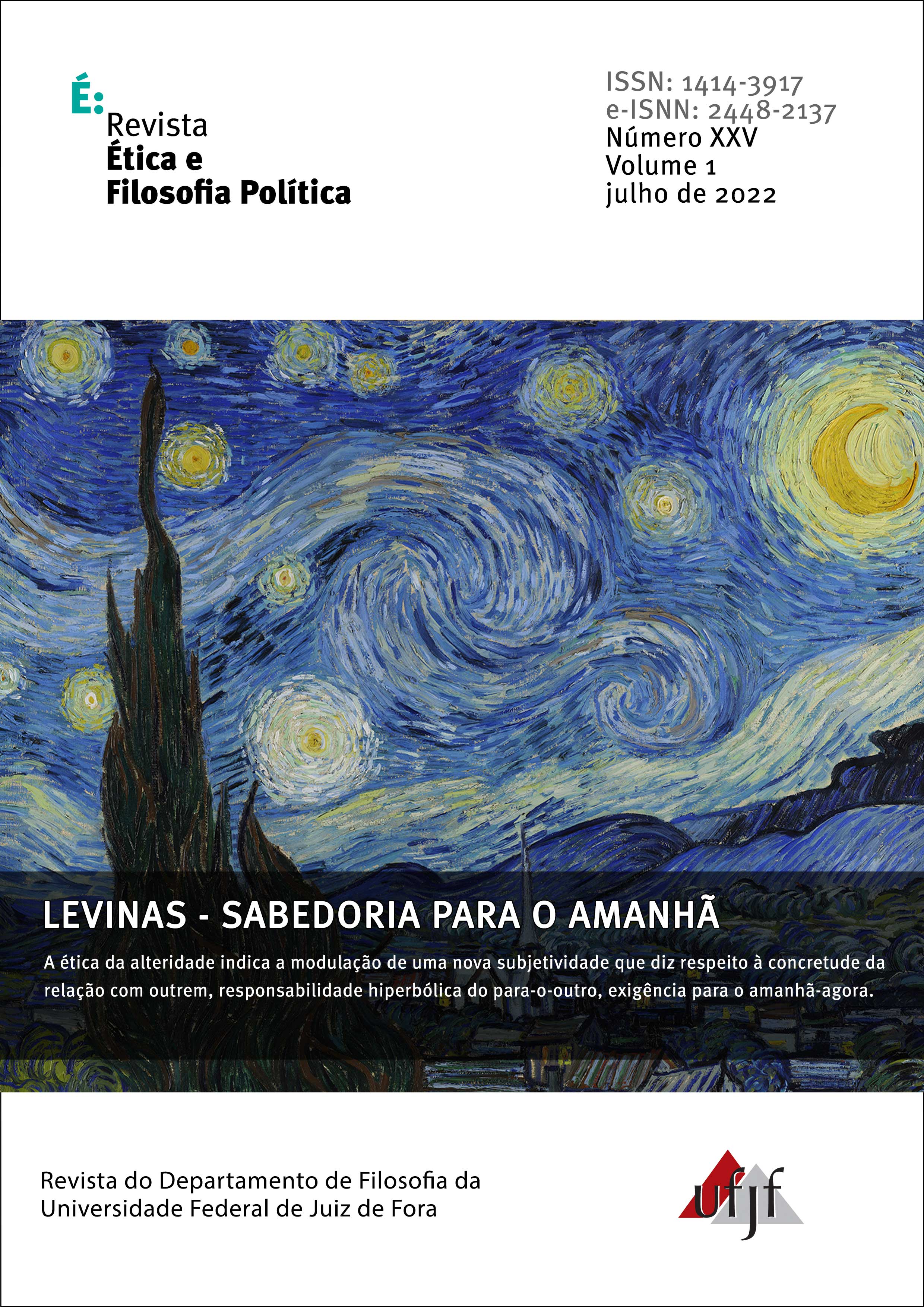How many messiahs, how many alephs? Levinas’ talmudic “messianic texts” in three numbers, and André Neher’s biblical response
DOI:
https://doi.org/10.34019/2448-2137.2022.39964Resumo
This article approaches Levinas’s 1963 Talmudic reading entitled “Messianic Texts” in light of the metaphoric numbers 0, 1, and 2. “Zero” will refer to unforeseen silences in the Talmudic text in question (here, Rabbi Eleazar’s sudden silence in the debate about the conditions of redemption, as well as commentator Rashi’s silence on Talmudic discussions about a certain “identity” of the messiah. The number “one” concerns a textual hapax: Rabbi Hillel’s historicist dismissal of the messiah as promise and open future—a position virtually anathema to rabbinics (inter alia) but nevertheless preserved by the Talmud. My metaphoric numbers strategy turns, finally, to the curious presence of “allegorical doubles” in the Bible, which Levinas describes as a configuration of textual “eidetics.” Using my three numbers (0, 1, 2) as an elementary analytic grid, I turn from Levinas’ “Messianic Texts” to André Neher’s biblical commentary on Levinas’s presentation—a commentary similarly concerning messianism but no longer in the Talmud. My purpose is dual: to sketch the context of this complex Talmudic reading, to offer one (idiosyncratic) reading-strategy focusing on two events of “silence,” the future anterior of the “messiah” who will have been but will come no more, and finally the play of identity-in-difference in the biblical doubles.
Keywords: “Messianic Texts,” Vladimir Jankélévitch, André Neher, messianisms, world-to-come, the Samozvanetz.




